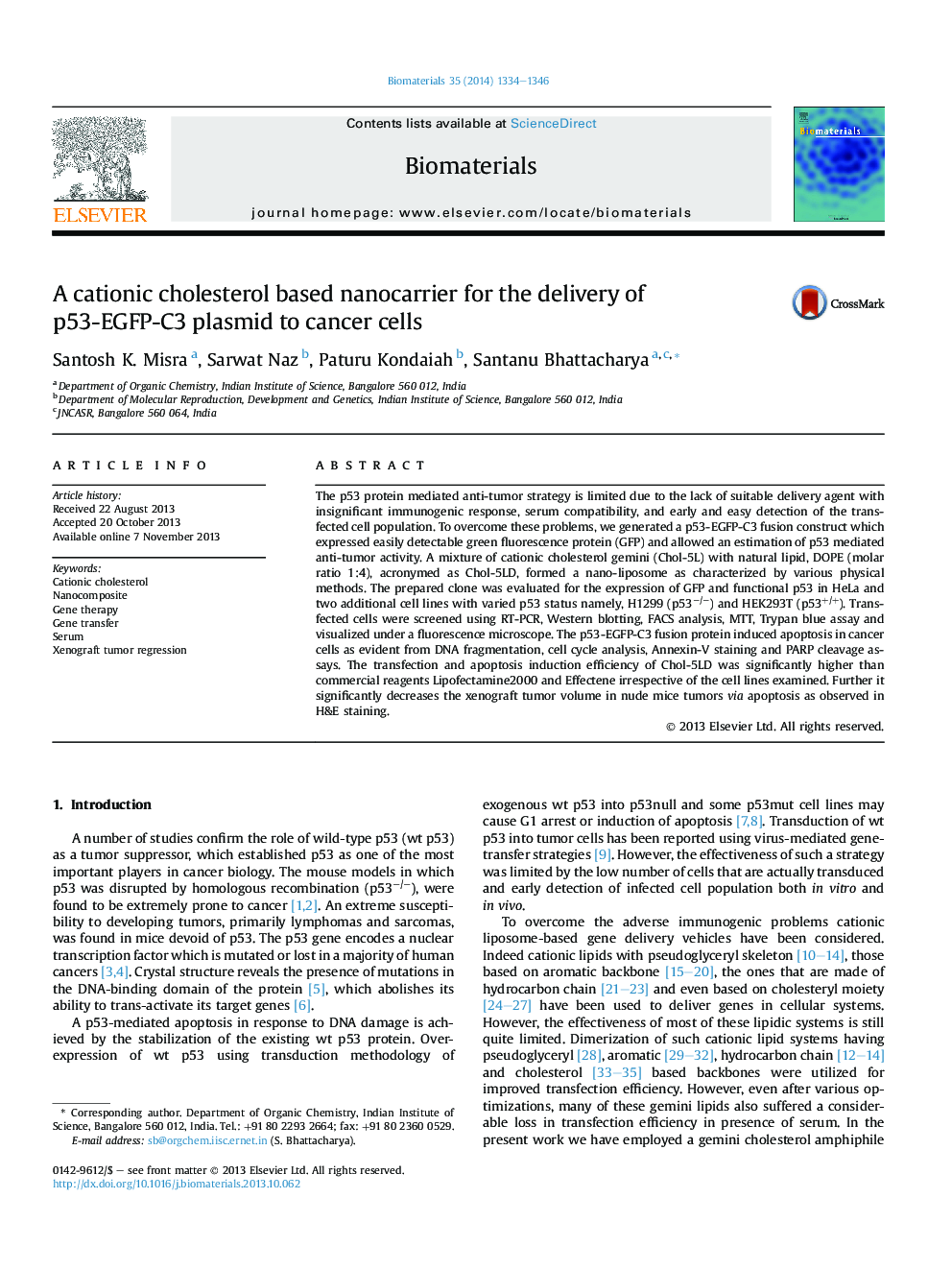| Article ID | Journal | Published Year | Pages | File Type |
|---|---|---|---|---|
| 10228612 | Biomaterials | 2014 | 13 Pages |
Abstract
The p53 protein mediated anti-tumor strategy is limited due to the lack of suitable delivery agent with insignificant immunogenic response, serum compatibility, and early and easy detection of the transfected cell population. To overcome these problems, we generated a p53-EGFP-C3 fusion construct which expressed easily detectable green fluorescence protein (GFP) and allowed an estimation of p53 mediated anti-tumor activity. A mixture of cationic cholesterol gemini (Chol-5L) with natural lipid, DOPE (molar ratio 1:4), acronymed as Chol-5LD, formed a nano-liposome as characterized by various physical methods. The prepared clone was evaluated for the expression of GFP and functional p53 in HeLa and two additional cell lines with varied p53 status namely, H1299 (p53â/â) and HEK293T (p53+/+). Transfected cells were screened using RT-PCR, Western blotting, FACS analysis, MTT, Trypan blue assay and visualized under a fluorescence microscope. The p53-EGFP-C3 fusion protein induced apoptosis in cancer cells as evident from DNA fragmentation, cell cycle analysis, Annexin-V staining and PARP cleavage assays. The transfection and apoptosis induction efficiency of Chol-5LD was significantly higher than commercial reagents Lipofectamine2000 and Effectene irrespective of the cell lines examined. Further it significantly decreases the xenograft tumor volume in nude mice tumors via apoptosis as observed in H&E staining.
Related Topics
Physical Sciences and Engineering
Chemical Engineering
Bioengineering
Authors
Santosh K. Misra, Sarwat Naz, Paturu Kondaiah, Santanu Bhattacharya,
